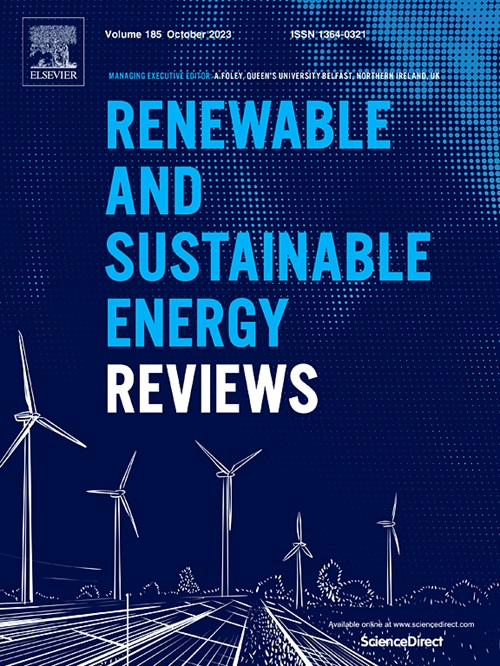Decarbonization of district heating: A systematic review of carbon footprint and key mitigation strategies
IF 16.3
1区 工程技术
Q1 ENERGY & FUELS
引用次数: 0
Abstract
This paper provides a comprehensive analysis and comparison of the carbon footprint of decarbonization strategies for district heating. By reviewing data from 42 Life Cycle Assessment (LCA) studies encompassing 160 heating configurations, the study highlights a predominant focus on supply-side factors, while demand-side and regulatory strategies remain underexplored. Results show that renewable-based systems yield the lowest emissions, ranging from −0.001 to 0.0909 kg CO2e/MJ of heat, with waste heat and geothermal at the lower end and solar thermal and certain biomass categories at the higher end. Biomass emissions are highly variable, ranging from very low to levels comparable with gas boilers, while solar thermal systems without heat storage present the highest emissions among renewable options, similar to those of gas boilers. Fossil fuels-based systems exhibit the highest emissions, ranging from 0.031 to 0.371 kg CO2e/MJ. Systems combining renewable and fossil sources range between 0.0003 and 0.136 kg CO2e/MJ. Analysis of energy conversion technologies indicates that Combined Heat and Power (CHP) systems significantly reduce emissions compared to traditional boilers, with reductions ranging from 16 % for multifuel systems to 70 % for geothermal systems. Heat pumps, especially when integrated with renewable energy sources, achieve an average emissions reduction of 64 % compared to gas boilers. Low temperature district heating (4GDH and 5GDH) improves efficiency and lowers emissions by 70 % relative to existing networks (3GDH). The implementation of heat storage results in 50–60 % emission reductions in solar thermal and multifuel setups, though its impact is less pronounced with geothermal systems. Additionally, subsidies for renewable heat technologies contribute to a 2–10 % decrease in emissions, underscoring the importance of supportive policy frameworks. Notable emission reductions are observed with CHP systems and heat pumps compared to gas boilers, as well as with heat storage in solar thermal and multifuel setups. The paper reveals inconsistencies and research gaps in previous studies and suggests the need for further investigation and standardized methodologies.
求助全文
约1分钟内获得全文
求助全文
来源期刊

Renewable and Sustainable Energy Reviews
工程技术-能源与燃料
CiteScore
31.20
自引率
5.70%
发文量
1055
审稿时长
62 days
期刊介绍:
The mission of Renewable and Sustainable Energy Reviews is to disseminate the most compelling and pertinent critical insights in renewable and sustainable energy, fostering collaboration among the research community, private sector, and policy and decision makers. The journal aims to exchange challenges, solutions, innovative concepts, and technologies, contributing to sustainable development, the transition to a low-carbon future, and the attainment of emissions targets outlined by the United Nations Framework Convention on Climate Change.
Renewable and Sustainable Energy Reviews publishes a diverse range of content, including review papers, original research, case studies, and analyses of new technologies, all featuring a substantial review component such as critique, comparison, or analysis. Introducing a distinctive paper type, Expert Insights, the journal presents commissioned mini-reviews authored by field leaders, addressing topics of significant interest. Case studies undergo consideration only if they showcase the work's applicability to other regions or contribute valuable insights to the broader field of renewable and sustainable energy. Notably, a bibliographic or literature review lacking critical analysis is deemed unsuitable for publication.
 求助内容:
求助内容: 应助结果提醒方式:
应助结果提醒方式:


